Data Check: What Happened When We Stopped Podcasting for Nearly 6 Months?
We take podcasting quite seriously at Digital 22. Not only does it act like an ‘escape’ to sit down with a beer and talk all things inbound marketing, but it’s also quite an important part of our inbound marketing strategy. However, after a consistent run of churning out quality episodes with the team and some high-profile guests, we went through a dry spell when we didn’t upload an episode for around six months.
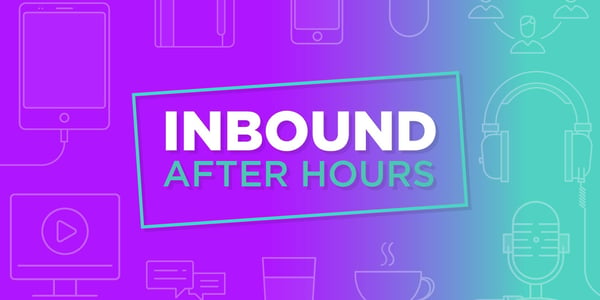
Although it’s getting back on track now, here’s what happened during that time and what this tells us.
Blog Post Views
Towards the end of July in 2017, we took the plunge and uploaded the first episode of our Inbound After Hours podcast. It focused on all things blogging such as frequency, length, traffic and leads and as content creation is a big part of inbound marketing, it was the perfect topic, to begin with.
Over time, the episodes remained consistent. We chose topics that had plenty of value and interest while there was also expert insight from some special guests, ranging from Growth-Driven Design founder Luke Summerfield to Brian Halligan, the Co-Founder and CEO of HubSpot.
The initial podcast and podcast blog consistency ended towards the end of March 2018, following the episodes with Olivia Kirwin of HubSpot and Hana Abaza of Shopify Plus. So, here’s what the blog post views looked like during that phase on a weekly basis.
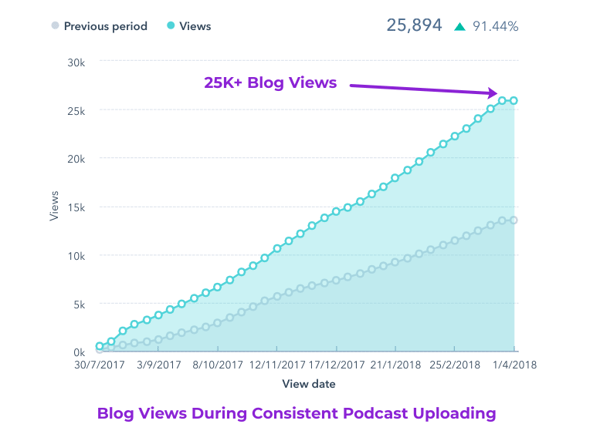
As you can see above, the more consistent we were with podcasts and blogs to match those podcasts, the more views we received. In fact, the blog post views reached around the 25,000 mark just before we stopped podcasting.
In comparison, the months in which we didn’t podcast saw a significant dip in blog post views, with almost a 5,000 decrease.
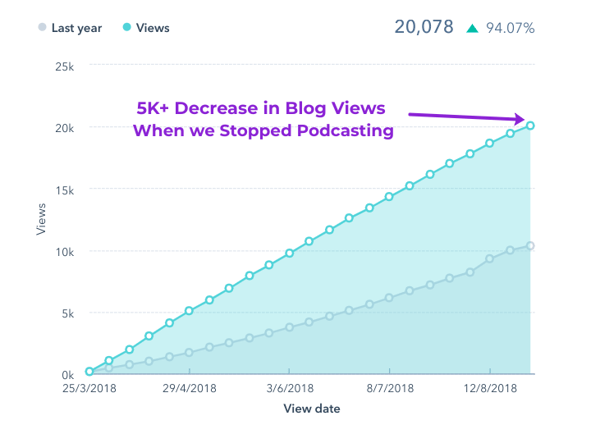
Blog Subscribers
The important thing to note about blog subscribers is that not every visitor or lead is subscribing just for the podcast blogs. This is because there’s plenty of content revolving around different topics being published. However, when podcasts and podcasts blogs were being published regularly, we were boasting over 500 subscribers at one point.
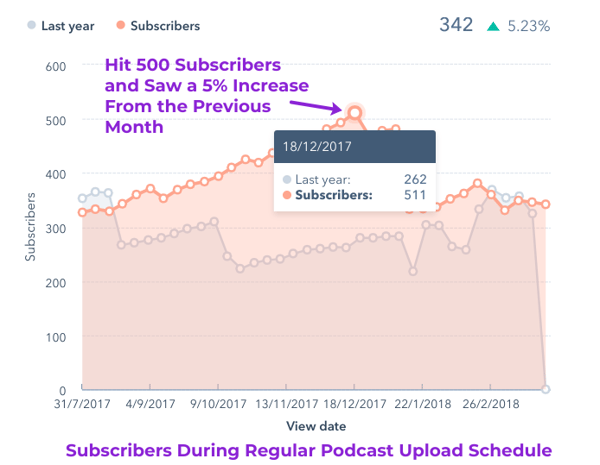
What’s interesting about the following graph, though, is that we didn’t lose a vast number of subscribers when regular content wasn’t being published and podcasts weren’t being uploaded. The overall number of subscribers did steadily grow, but there was never that big spike like when we had over 500 subscribers.
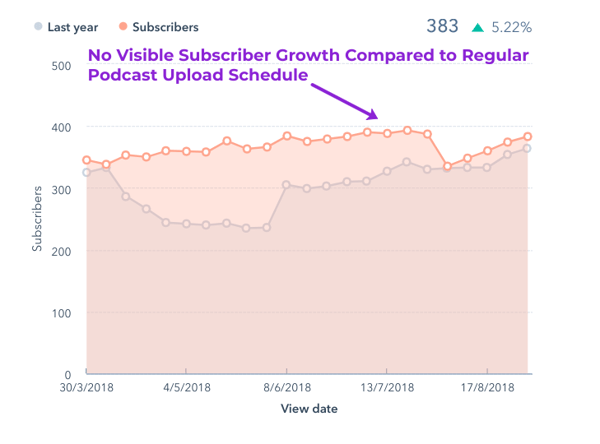
Although other content was still slowly ticking over, we believe that had more podcast episodes been published on a regular basis to provide visitors with another method of checking out the content, that figure could have been much higher.
Another platform we publish our podcast on is SoundCloud. Something interesting we noted there was that a couple of our episodes were performing poorly (this was down to inconsistency and uploading later than planned).
However, once we upped the effort and started recording and uploading them again, we've consistently received triple figures when it comes to 'plays.'
Email Open and Click-Through Rates
Another common way we get our podcasts and their blogs shared is to send via email. This way, we’re able to track who’s opened the email, who’s clicked on it and who’s actually watching or listening to the podcast - or who’s reading the blog.

As a general overview during the consistent days of podcasting, plenty of emails went out while you can also see the delivery rate, the open rate and more.
Taking it a step further, below you’ll be able to see the open rates of the emails that were sent out as well as the click-through rate. You can also see that both rates saw increases compared to the days where Inbound After Hours didn’t even exist.
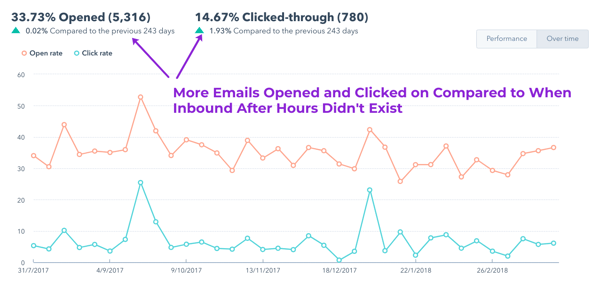
In comparison to the above, the stats did change slightly during the drier spell of fewer podcast and podcast blogs. Granted, the time frame was much shorter compared to the period where content was regularly being pushed out, but the stats do speak for themselves.
To compare the email overviews, slightly fewer emails were delivered and while the open rate saw a slight boost - as fewer emails were sent - there were significant drops in both the click-through rate and the number of contacts that were lost, which wasn’t great to see but that’s on us.

Diving deeper into the specifics, more emails were opened during the time we didn’t upload many podcasts. Again, other emails were still being sent and fewer emails were also delivered in comparison. However, it’s one thing for emails to be opened and the number of people that clicked through is completely different.
That’s the key difference and a metric we focus on. We need people to be clicking through to watch the podcast or read the relevant blog as simply opening an email doesn’t provide much value.
Again, the frequency of emails being delivered might have increased had more podcasts been recorded and blogs were written, while the click-through rate might have also seen an increase.
But a key takeaway here is the suggestion that fewer but better targeted emails were being sent.
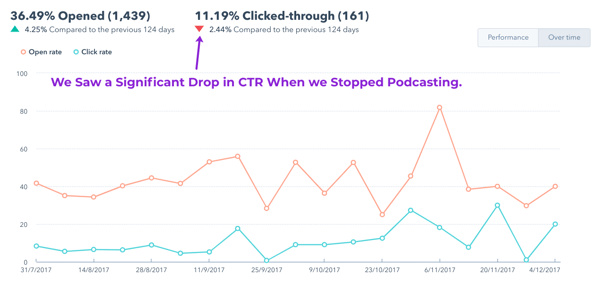
Making Podcasts a Part of Your Content Marketing Strategy
Now that you know what happened during the somewhat lengthy hiatus, let’s run through why podcasts are important in the first place.
Other than actually enjoying podcasting and talking about inbound marketing, both audio and video podcasts are part of our content marketing strategy. The reason behind this is that with every single episode we record, there’s a dedicated blog post to go along with that.
They work hand in hand. Some of our personas will love to watch the podcast and follow along with the blog, while others will prefer to just listen instead. So, it’s about giving options to help with growth and get more leads.
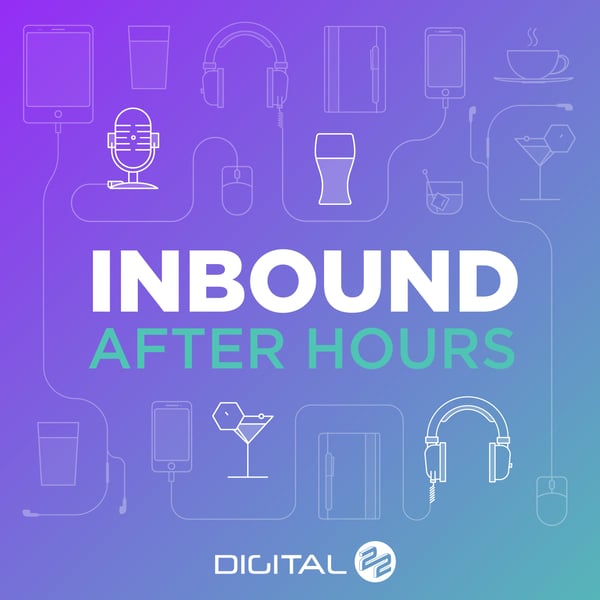
Blogs are still popular, but audiences are now rather limited in how they can consume them as they can’t read a blog when running on a treadmill at the gym or while they’re driving. Podcasting lets us connect with audiences and personify our brand while diversifying our content channels. This allows the audience to engage with our content in their preferred manner.
So it’s quite simple to break it down.
We’ve seen how the metrics can decrease when podcasts aren’t being uploaded and blogs aren’t being published either. So, more time is being dedicated to ensure episodes full of value and relevance are being uploaded regularly while blog posts also go out with them. If you want some tips for getting started, check out this talk from one of our HubSpot User Group events back in 2017...
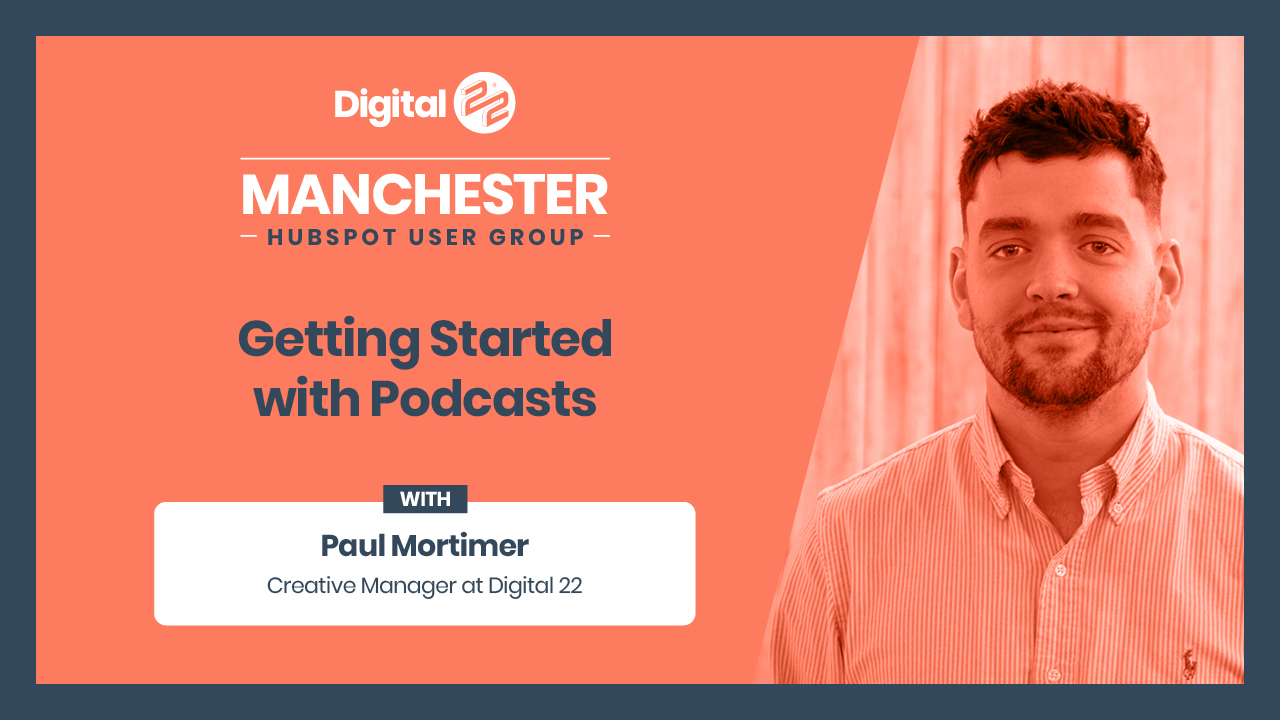
Check Out What All The Fuss Is About by Subscribing to Inbound After Hours
In case you couldn’t tell, we love inbound marketing here at Digital 22. So much so, that we’re constantly working behind the scenes to see how we can improve our podcasting process to make the experience for our viewers and listeners much better.
From new equipment to getting more of the team involved, right through to booking episodes with some high-profile guests and sharing our own experiences and tips - there’s always something worth tuning in for every week. If you don’t want to miss an episode of the weekly show, then join our private Facebook group.
Here, you'll be the first to know when the show goes live while receiving plenty of regular news and updates on all things inbound marketing - and you can have your own say, too.
Real Growth. Real Impact.
Making AI adoption not a big deal with Mike Kaput from The AI Show
HubSpot's Spring Spotlight 2025 was not what we expected
The Power of Community in Marketing
The Return of Human Marketing in an Automated Age | Avidly Talks
How to make change projects a success - Change management tactics
How to prompt AI for great creative ideas
'Should I use HubSpot?' 32 fundamental reasons why you should
See why enterprises choose Avidly
Let’s build your HubSpot success story
Compelling final call to action - with accompanying link to Contact page







